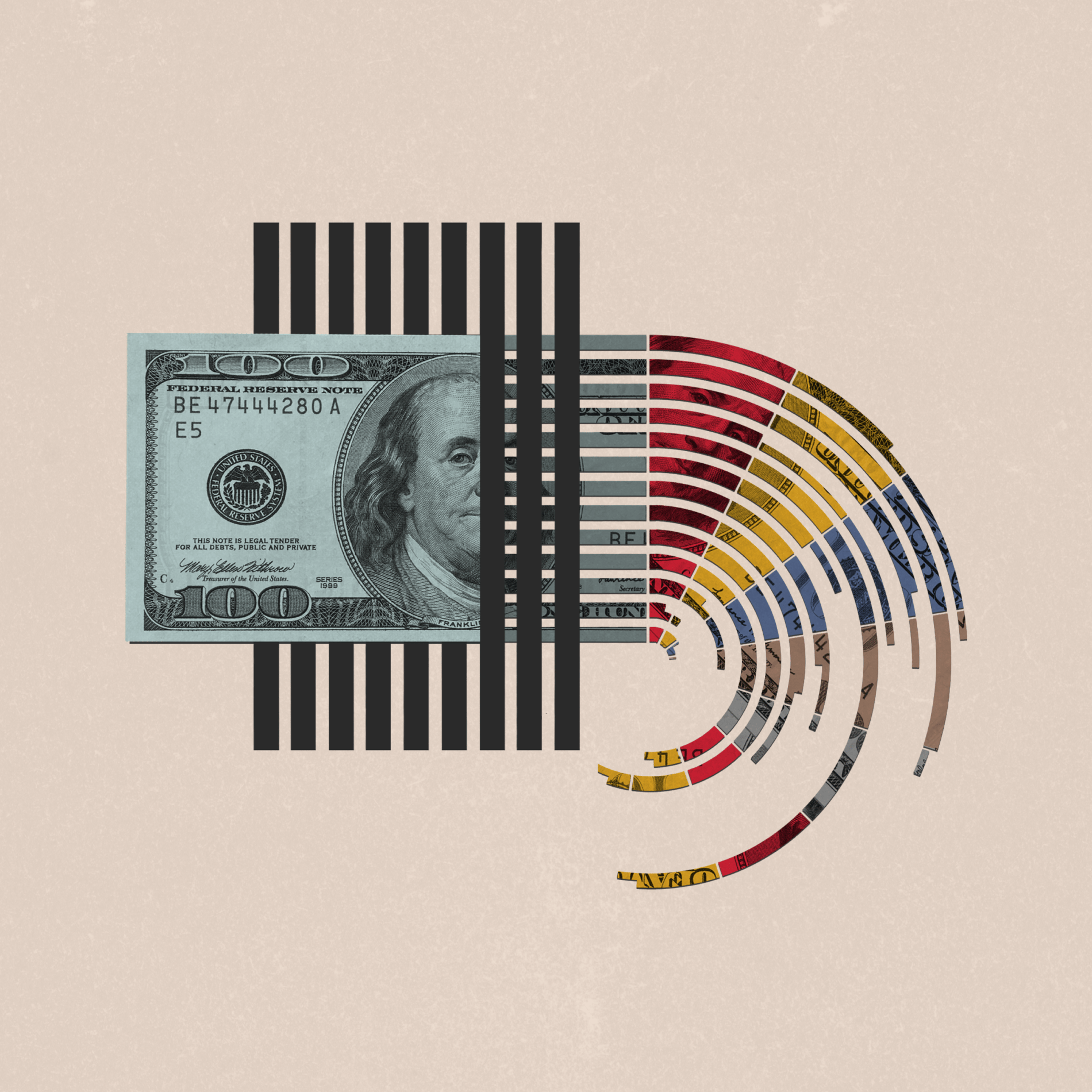
Money & the World
Canada’s Super-Secret Plan to Soar Past the U.S. Economy
The U.S. has handed Canada an opportunity to become an economic powerhouse. Could these unorthodox ideas get us there?
Wealthsimple makes powerful financial tools to help you grow and manage your money. Learn more
Canada has spent 2025 on its back foot. There have been threats to our sovereignty, threats about tariffs, threats about even higher tariffs — all levelled at us by the nation long purported to be one of our closest allies: the United States.
But what if this was actually an opportunity to assert our sovereignty? To get on our front foot and become the world’s next great economic power? After all, as Marko Papic, chief strategist at BCA Research, told the Financial Times earlier this year, “Canada absolutely has potential to be a global superpower.” Yes, he said “a” and we said “the” — never mind that. Maybe our time is now: we could steal American jobs, outshine American companies, and maybe even supplant American leadership on the global stage without uttering a single “sorry, bud.” And, while we’re at it, we’ll take the World Series too. Here’s the plan.
Step 1: Win over America’s former BFFs

If you intend to be an economic giant, you’re going to need lots of friends, aka trading partners. Post-war America was shrewd about this; the current administration’s increasingly predatory trade policies are eroding its relationships. This hands us a giant opportunity. Canada has the world’s second-best reputation internationally. (The U.S. plunged 18 places this year, to 48th.) We already have trade agreements with 51 countries, but this year Ottawa has capitalized on our goodwill by forging even closer ties with Mexico, Europe, and South Korea. Canada’s reputation for reliability is a huge strength that will serve us well in striking future deals, says Carleton University international affairs professor Fen Osler Hampson. We could go further by enhancing our ability to deliver. Kent Fellows, an economist at the U of C, has pitched the government on building a northern corridor that would allow us to ship goods and resources and economically connect all three of our coasts — which could add $6.5 billion to our GDP. But even with that, reliability and connectivity will only get us so far…
Step 2: Attract the best and brightest
To really gain an economic edge, you can’t just be likable. You need a deep talent pool. And here again the U.S. has handed us a tremendous opening by jacking up fees for its skilled-worker visa. Luring bright workers abroad to Canada shouldn’t be a hard sell, says Jen Lussier, COO of tech-talent hub Platform Calgary. We live three years longer than Americans on average, we’re happier, and we have far less poverty.
Canada is loaded with smart people. And yet we rank 17th in the world for innovation, whereas the U.S. is third, and we also lag in entrepreneurship and R&D. Poaching skilled immigrants from America and elsewhere could help with both. Lussier says that Canada could use more senior-level tech talent, to mentor our workers and create new businesses to employ them. Good thing Canada already has the model for an express entry program; if we tied it to local employment and offered an improved path to permanent residency, that could be a potent alternative to the U.S. Yes, we’d need to build more houses for all the newcomers, but, c’mon, we’ll need to do that anyway.
Step 3: Get more resourceful

Canada is resource-rich. Yet mining, agriculture, and oil and gas together account for a smaller share of our GDP (about 10%) than housing — which isn’t exactly a productive sector. These resources, if developed sustainably, represent a huge foreign investment opportunity. And they could give us leverage to secure strong trade agreements, à la China and its rare-earth minerals.
Take mustard. Yes, mustard — a silly example, but bear with us. Canada is the world’s number-one mustard exporter, and Americans are our number-one customer, stuffing their tariff-loving faces with 30 million litres of it each year. Imagine the sheer panic later this month if baseball fans were to crowd into stadiums for the MLB playoffs and order their favourite processed-meat snack — only to discover their go-to condiment is gone (or $5 extra). Now swap out mustard for potash, softwood lumber, or even electricity. That’s all potential leverage.
Step 4: Morph into a manufacturing dynamo
You can’t be a true economic behemoth if you don’t have a robust high-value-added manufacturing sector — think semiconductors or medical devices. Manufacturing is an economic power-up: every dollar spent on it earns $2.64 for the economy because of the indirect business activity it sets off. Unfortunately, Canada invests three times less in manufacturing upgrades than the U.S., which helps explain why the sector has declined sharply since the 1950s and makes up only 10% of our GDP. One zany/clever idea? Canada is littered with empty Targets, Nordstroms, and other big-box stores from corporate America’s botched attempts to make inroads here. What if we incentivized businesses to turn these spaces into factories that produce strategically critical goods? Ukraine is building its bleeding-edge drones in repurposed office buildings and basements. Why couldn’t we be as scrappy? Big-box conversions have been done before! And if the private sector balks about trying such projects, Canada has a long history of using Crown corporations to develop vital industries.
OK, kidding about the mustard, but seriously…
We’re not going to bargain with the U.S. over mustard, much less overtake their economy. What we’re talking about, really, are the building blocks for a global economic power. We’re proposing two things. First: double down on our strengths. Brian Lewis, a senior fellow with the Munk School and Ontario’s former chief economist, says the media tends to fixate on Canada’s shortcomings compared to the U.S., which contributes to a defeatist attitude. If we want to spur growth, Lewis says, “Canada should keep being successful at the things we’re naturally good at” — education, stability, etc. — and take confident, proactive steps to address our weaknesses.
Second: take some big, calculated swings. Nations soar or decline for many reasons, but one of the biggest historically has been the choices they make (or their leaders make for them). Consider the fork in the road between South and North Korea. Both are nearly identical in terms of geography and resources. But over just a few decades, South Korea grew its economy to 94 times the size of North Korea’s by investing in education and R&D and building strong trade ties. Turning old Targets into factories won’t solve all of Canada’s issues. But it would behoove us to be a country that moves beyond hand-wringing and starts proactively shaping the economy we want, rather than settling for the one we have, even if that means trying a few unorthodox ideas along the way.
Sarah Rieger is a senior news writer for Wealthsimple Media, and co-host of the TLDR podcast. She was previously a reporter at CBC News and editor at HuffPost Canada. You can reach her at srieger@wealthsimple.com.





